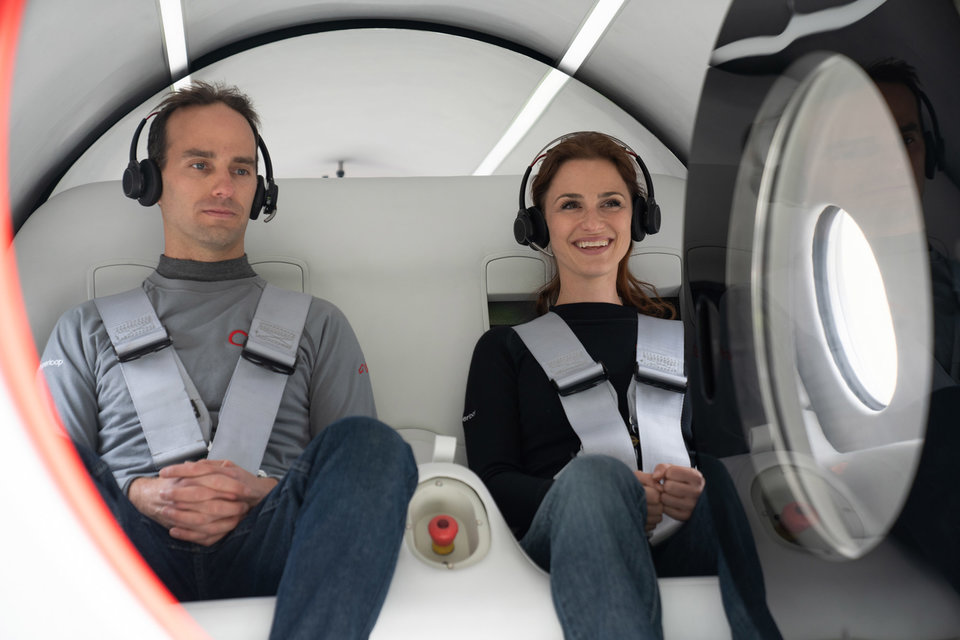All Images: Virgin Hyperloop
Premiumisation
India and luxury rail travel: a model for success
India has done an excellent job of following the growing premiumisation trend and made enormous improvement in this particular market segment, according to GlobalData.
The development of luxury rail in India has attracted high spending international tourists from all over the world, providing a range of socio-economic benefits for India.
As such, other countries not typically considered leaders in tourism looking to develop their tourism proposition should consider a similar product in order to reap the benefits, providing they have the appropriate rail infrastructure.
India has done an excellent job of following the growing premiumisation trend and made enormous improvement in this particular market segment. As a result of its continued investment, India has created a range of luxury holidays and tours centred around premium rail travel and India’s limitless culture, destinations, and tourist experiences.

Virgin Hyperloop chief technology officer and co-founder Josh Giegel and director of passenger experience Sara Luchian
MaxBögl product manager Andreas Rau. Image: Max Bögl

Luxury rail tourism helps generate significant employment and tourism revenue
Luxury trains in India have helped generate more employment, as staff are needed to support the number of services that constitute a high-quality luxury guest experience. The product has benefited multiple facets of India’s tourism industry, including travel intermediaries. For example, India implemented a policy that all tickets must be booked by travel agents that are authorised by luxury train companies.
The authorised travel agents earn a commission that can range between 18% and 25% of the total ticket price, providing substantial economic returns for both the intermediaries and luxury rail providers.
Tickets for luxury trains, such as the Maharaja Express in India, start from approximately $4000 for a deluxe cabin, including accommodations, all meals with soft beverages, butler service, porterage at stations, and off-train excursions. It also includes entrance costs, photography permission fees, transportation, and the services of a guide.
This high price point makes it unaffordable for the middle class of emerging economies, but also makes it a great option for foreigners coming from developed countries, for whom it is more affordable.
The products’ ability to attract high spending luxury tourists has a positive multiplier-effect on a range of sectors. With luxury train tours, there are multiple scheduled stops, allowing visitors to explore a range of destinations, generating additional revenue for local businesses.
According to GlobalData’s 2021 Traveller Spending Patterns database, the average expenditure per outbound tourist on retail was $335, which was the second-highest channel of expenditure after transportation, showing that high spending tourists play an important role in generating tourism revenue and in contributing to a country’s economy.
When things did start to pick up, when the lockdown was relaxed, the trains were fantastic
Targeting high spending and high-income countries is key to success
According to GlobalData’s Macroeconomic database, only 8.8% of India’s population falls into the $5000+ purchasing power parity income bracket, which makes it less affordable for the remaining 91.2% of the population to access luxury trains for holidays.
In order to be successful in generating tourism revenue, India needs to attract luxury tourists from countries like Australia, the UK, and the US, with direct flights operating to each of these destinations throughout the year. These are some of world’s top source markets in terms of outbound tourism spending according to GlobalData’s Tourism Spending Patterns Database.
India’s luxury train product model has the potential to be highly successful in other developing countries, providing they have the infrastructure. Countries such as Thailand, Vietnam, and China could potentially replicate this model.
For travel and tourism industry data, comment and analysis, visit GlobalData's Tourism Intelligence Centre.